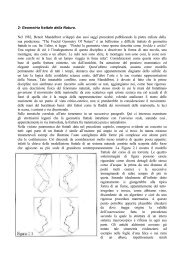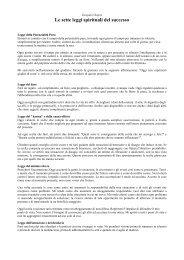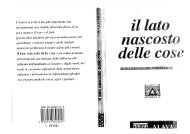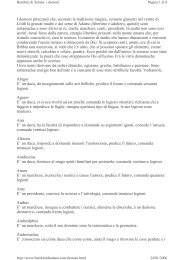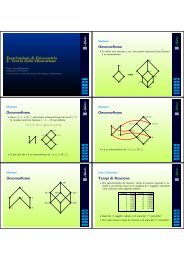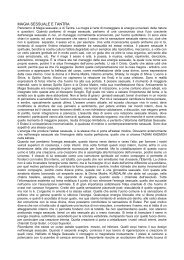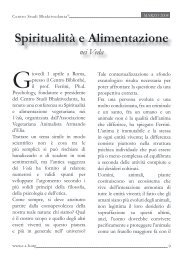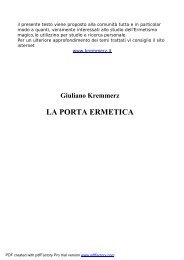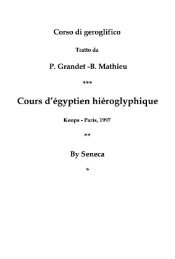36 TALIBANThe Taliban then turned their attention to the west in a bid to captureHerat. By late February 1995 after heavy fighting they captured Nimrozand Farah, two of the provinces controlled by Ismael Khan and advancedon the former Soviet airbase at Shindand, south of Herat. The Kabulregime was clearly worried by the Taliban advance and Ismael Khan'sfailure to hold the line against them. Masud's aircraft from Kabul begana bombardment of the Taliban front lines while he airlifted 2,000 of hisbattle-hardened Tajik fighters from Kabul to help defend Shindand andHerat. With no airpower, poor logistical support from their bases in Kandaharand a weak command structure, the Taliban began to take heavycasualties as they mounted assaults on government positions around Shindand.By the end of March 1995, the Taliban had been pushed out of Shindand.They retreated losing most of the territory they had captured earlier,suffering at least 3,000 casualties. Hundreds of wounded were left in thedesert to die because the Taliban had no medical facilities at the frontand their lack of logistics made it impossible for them to provide waterand food to their troops. 'We have never seen such an inhospitable environment.Every day we are bombed, 10 to 15 times. There is no food orwater and my friends have died of thirst. We lost communication withour commanders and we don't know where our other troops are. We ranout of ammunition. It was a great misery,' Saleh Mohammed, a woundedTaliban told me, as he was transported back to Kandahar. 2The Taliban had now been decisively pushed back on two fronts bythe government and their political and military leadership was in disarray.Their image as potential peacemakers was badly dented, for in the eyesof many Afghans they had become nothing more than just another warlordparty. President Rabbani had temporarily consolidated his politicaland military position around Kabul and Herat. By May 1995 governmentforces directly controlled six provinces around Kabul and the north, whileIsmael Khan controlled the three western provinces. The Taliban's initialcontrol over 12 provinces was reduced to eight after their defeats. ButHerat continued to remain a tantalizing prize, not just for the Taliban,but for the Pashtun transport and drugs mafias who were desperately keento open up the roads to Iran and Central Asia through Herat for theirbusiness.Few Mujaheddin commanders had the prestige of Ismael Khan and fewhad sacrificed more than the people of Herat during the war against theSoviets. Ismael Khan was an officer in the Afghan army when the Russiaxisinvaded Afghanistan and he had strong Islamic and nationalist leanings.When the Soviets occupied Herat, they viewed the Persian-speaking sHeratis as docile and unwarlike and the most cultured of all Afghans. Thelast time the Heratis were forced into a fight had been more than a cen-JHERAT 1995: GOD'S INVINCIBLE SOLDIERS ~ 37tury earlier when they had resisted a Persian invasion in 1837. Fearing noresistance, the Soviets developed the Shindand airbase as their largestairbase in Afghanistan and allowed the families of their army officers tosettle in Herat.But on 15 March 1979, the population of the city rose up against theSoviets in an unprecedented urban revolt. As the population killed Sovietofficers, advisers and their families, Ismael Khan staged a coup in the citygarrison, killing Soviet and communist Afghan officers and distributingarms to the people. Hundreds of Russians were killed. Moscow, fearingcopycat uprisings in other Afghan cities, sent 300 tanks from Soviet Turkmenistanto crush the revolt and began to bomb one of the oldest citiesin the world indiscriminately. Fifteen years later, large tracts of the citystill looked like a lunar landscape with rubble stretching to the horizon.More than 20,000 Heratis were killed during the next few days. IsmaelKhan escaped to the countryside with his new guerrilla army and tens ofthousands of civilians fled to Iran. For the next decade Ismael Khan wageda bitter guerrilla war against the Soviet occupation and set up an effectiveadministration in the countryside, winning the respect of the population.This was to prove invaluable to him when he was to re-establish himselfin Herat after the departure of Soviet troops.Herat was the cradle of Afghanistan's history and civilization. An oasistown, it was first settled 5,000 years ago. Its 200 square miles of irrigatedfarmland in a valley rimmed by mountains, was considered to have therichest soil in Central Asia. The ancient Greek historian Herodotusdescribed Herat as the breadbasket of Central Asia. 'The whole habitableworld had not such a town as Herat,' wrote the Emperor Babar in hismemoirs. The British likened its beauty to England's home counties. 'Thespace between the hills is one beautiful extent of little fortified villages,gardens, vineyards and cornfields, and this rich scene is brightened bymany small streams of shining water which cut the plain in all directions,'the British adventurer and spy Captain Connolly wrote in 1831- 3For centuries the city was the crossroads between the competing Turkicand Persian empires and its population was an early convert to Islam. Themain mosque in the city centre dates back to the seventh century andwas rebuilt by the Ghorid dynasty in 1200. In medieval times it was botha centre for Christianity, under the Nestorian Church and a major centrefor Sufism - the spiritual and mystical side of Islam. Followers of theNaqshbandi and Chishtyia Sufi brotherhoods became Prime Ministers andMinisters. Herat's patron saint is Khawaja Abdullah Ansari who died in1088, a celebrated Sufi poet and philosopher who still has a large followingin Afghanistan. When Genghis Khan conquered Herat in 1222, hespared only 40 of its 160,000 inhabitants. But less than two centuries laterthe city had recovered to reach its pinnacle when Taimur's son Shah
38 ~ TALIBANrHERAT 1995: GOD'S INVINCIBLE SOLDIERS 39Rukh and his Queen Gowhar Shad moved the capital of the Timuridempire from Samarkand to Herat in 1405.The Timurids were the first to merge the Turkic nomadic steppe culturewith the refinements of the settled Persian lands, importing artisans from IPersia, India and Central Asia to build hundreds of magnificent monuments.Shah Rukh and Gowhar Shad turned Herat into a vast constructionsite building mosques, madrassas, public baths, libraries and palaces.Herat's bazaars produced the finest carpets, jewellery, weapons, armourand tiles. Bihzad, considered the finest Persian miniaturist painter of alltime worked at the court. 'In Herat if you stretch out your feet you aresure to kick a poet,' said Ali Sher Nawai, Shah Rukh's Prime Minister, jjwho was also an artist, poet and writer. 4 Nawai, who is buried in Herat jand is the national poet of modern day Uzbekistan, is considered the]father of literary Turkic for he was the first to write poetry in Turkic)rather than Persian. The Persian poet Jami was also at court and is buriedin Herat while Shah Rukh's son Ulugh Beg, was an astronomer whose]observatory in Samarkand monitored the movement of stars. His calendar |and tables of the stars were published at Oxford <strong>University</strong> in 1665 andare still astonishingly accurate.In 1417, Gowhar Shad, herself a builder of dozens of mosques, com-ipleted the construction of a magnificent complex on the outskirts of the]city consisting of a mosque, madrassa and her own tomb. The tomb, with iits panelled walls of Persian blue tiles bejewelled with floral decorations!and topped by a ribbed blue dome with dazzling white Koranic inscriptions,is still considered one of the finest examples of Islamic architecture \anywhere in the world. When Byron saw it in 1937, he described it as'the most beautiful example in colour in architecture ever devised by man ito the glory of God and himself.' 5 When Gowhar Shad died at the age of j80 after constructing some 300 buildings in Afghanistan, Persia and Cent-]ral Asia, the inscription on her tomb read simply 'The Bilkis of the Time.' jBilkis means the Queen of Sheba. 6 Much of the complex was demolishedby the British in 1885 and the Soviets later mined the area to keep outthe Mujaheddin.When the Soviets bombed Herat in 1979, they inflicted more damageon the city than even the Mongols had done. 'Herat is the most destroyed!and the most heavily mined city in the world today, yet we get no help]from anywhere,' Ismael Khan told me in 1993. 7 Despite the devastationaround him, Ismael Khan had disarmed the population and established!an effective administration with functioning health care and schools in ]the three provinces.Short, shrewd and with an elfin smile that made him look much]younger than his 47 years, Ismael Khan had 45,000 children studying inlHerat's schools, by 1993 half of them were girls - 75,000 students in all Jacross the three provinces. In 1993 he took me to see the Atun Heirvischool where 1,500 girls studied in two shifts, sitting under the open skyas there were no classrooms, desks, books, paper or ink - their desire tolearn only re-emphasising Herat's history of learning. In contrast whenthe Taliban took over Kandahar, the 45 working schools were closeddown and only three remained. When the Taliban were later to captureHerat they were to close down every school in the city and disallow girlsfrom even studying at home.But by 1995 Ismael Khan faced immense problems. He had disarmedthe population and created an unpopular conscript army. To face theTaliban, he needed to rearm the population while his conscript army wasriddled with corruption, low morale and lack of resources. Official corruptionand high-handedness towards civilians had become rampant in thecity and customs officials charged trucks passing through Herat the exorbitantsum of 10,000 Pakistan rupees (US$300) - a sure way to make anenemy of the transport mafia. The Taliban were well informed of theproblems he faced. 'Ismael is weak, his soldiers will not fight because theyhave not been paid and he is widely discredited amongst his peoplebecause of the corruption in his administration. He stands alone and hasto be propped up by Masud,' Mullah Wakil Ahmad told me. 8Ismael Khan also made a serious military miscalculation. Believing theTaliban were on the verge of disintegration due to their defeat, helaunched an ill-prepared and badly timed offensive against them. With alarge mobile force, he captured Dilaram on 23 August 1995 and parts ofHelmand a week later thereby threatening Kandahar. But his forces wereoverstretched in a hostile environment while the Taliban had spent thesummer rebuilding their forces with arms, ammunition and vehicles providedby Pakistan and Saudi Arabia and a new command structure createdwith the help of ISI advisers. The ISI also helped broker an agreement,never made public, between the Taliban and General Rashid Dostum.Dostum sent his Uzbek technicians to Kandahar to repair Mig fightersand helicopters the Taliban had captured a year earlier in Kandahar,thereby creating the Taliban's first airpower. Meanwhile Dostum's ownplanes began a bombing campaign of Herat.To meet Ismael Khan's threat, the Taliban quickly mobilized some25,000 men, many of them fresh volunteers from Pakistan. Their moreexperienced fighters were deployed in mobile columns in Datsun pick-ups,which harassed Ismael's supply lines. At the end of August at Girishk theTaliban decisively ambushed the intruders and Ismael Khan sounded ageneral retreat. Within a few days the Taliban pushed back his forces toShindand, which he inexplicably abandoned on 3 September 1995 withoutputting up a fight. Then two days later, with his troops in a blindPanic as the Taliban mobile columns swept through and around them,
- Page 1 and 2: YALE NOTA BENE"The broader storyher
- Page 3 and 4: TalibanMilitant Islam,Oil and Funda
- Page 5 and 6: Vi ~ CONTENTSChapter 8A Vanished Ge
- Page 7 and 8: AFGHANISTAN•^ UZBEKISTAN J TAJIKI
- Page 9 and 10: 2 ~ TALIBANaccounts for some 40 per
- Page 11 and 12: "6 ~ TALIBANgas riches of landlocke
- Page 13 and 14: 10 ~ TALIBANgious mix that was to m
- Page 15 and 16: Part 1History of theTaliban Movemen
- Page 17 and 18: 18 ~ ISLAM OIL AND THE NEW GREAT GA
- Page 19 and 20: 22 ~ ISLAM OIL AND THE NEW GREAT GA
- Page 21 and 22: 26 ~ ISLAM OIL AND THE NEW GREAT GA
- Page 23 and 24: 30 ~ ISLAM OIL AND THE NEW GREAT GA
- Page 25: 34 TALIBANKabul- Hikmetyar had alli
- Page 29 and 30: 42 ~ TALIBANdo manage to take Kabul
- Page 31 and 32: J46 ~ TALIBANgreater weight to UN e
- Page 33 and 34: 50 ~ TALIBANas they hung from steel
- Page 35 and 36: 54 ~ TALIBANthey would help rearm t
- Page 37 and 38: 58 TALIBANGul Mohammed Pahlawan, Gh
- Page 39 and 40: 62 TALIBAN2,500 Taliban, who had re
- Page 41 and 42: 66 TALIBANshould throw all aid agen
- Page 43 and 44: 70 ~ TALIBANyears of battle and hel
- Page 45 and 46: 74 ~ TALIBANThousands of Hazaras we
- Page 47 and 48: 78 TALIBANhas become a plague,' sai
- Page 49 and 50: NEW STYLE FUNDAMENTALISM OF THE TAL
- Page 51 and 52: 86 TALIBANsity students - Hikmetyar
- Page 53 and 54: 90 TALIBANSharia was heavily influe
- Page 55 and 56: 94 TALIBANinflamed the debate in th
- Page 57 and 58: 98 TALIBANizing factor of Islam, it
- Page 59 and 60: 102 TALIBANadministrations made the
- Page 61 and 62: 106 ~ TAUBANfrom working, but it no
- Page 63 and 64: TALIBANUniversity, she held down a
- Page 65 and 66: 114 TALIBAN A VANISHED GENDER 115Ta
- Page 67 and 68: 118 TALIBANUS$1,300 - a small fortu
- Page 69 and 70: 122 TALIBANper cent of the total Pa
- Page 71 and 72: 126 TALIBANequipment, no electricit
- Page 73 and 74: 130 ~ TALIBANfight with the Mujahed
- Page 75 and 76: 134TALIBANAugust 1996 noted that Bi
- Page 77 and 78:
138 ~ TALIBANwho were using the Kho
- Page 79 and 80:
11DICTATORS AND OILBARONS: THE TALI
- Page 81 and 82:
146 TALIBAN DICTATORS AND OIL BARON
- Page 83 and 84:
150 — TALIBANgrowth of beards and
- Page 85 and 86:
154TALIBAN1998 when international o
- Page 87 and 88:
158 ~ TALIBANaround Afghanistan? Af
- Page 89 and 90:
162 TALIBAN ROMANCING THE TALIBAN 1
- Page 91 and 92:
166 TALIBAN ROMANCING THE TALIBAN 1
- Page 93 and 94:
ROMANCING THE TALIBAN 2: 1997-99 17
- Page 95 and 96:
174 — TALIBANnon-Russian pipeline
- Page 97 and 98:
178 — TALIBANROMANCING THE TALIBA
- Page 99 and 100:
182 ~ TALIBANApril 1999. 'The US ha
- Page 101 and 102:
186 ~ TALIBANters or the transport
- Page 103 and 104:
190 ~ TALIBANThis Wild West of free
- Page 105 and 106:
194 ~ TALIBANgovernance. Pakistani
- Page 107 and 108:
198 TALIBAN SHIA VERSUS SUNNI: IRAN
- Page 109 and 110:
202 TALIBAN SHIA VERSUS SUNNI: IRAN
- Page 111 and 112:
206 — TALIBANin Afghanistan - to
- Page 113 and 114:
210 — TALIBANand antagonism. The
- Page 115 and 116:
214 ~ TALIBANdrawn since 1996 - a P
- Page 117 and 118:
218 ~ TALIBANated and severely puni
- Page 119 and 120:
Origins of Members of the Taliban M
- Page 121 and 122:
APPENDIX 3 ~ 227Appendix 3A CHRONOL
- Page 123 and 124:
230 ~ TALIBANgraves near Shebarghan
- Page 125 and 126:
234 ~ TALIBAN8 June. US FBI places
- Page 127 and 128:
238 ~ TALIBAN1995 January16 MarchAp
- Page 129 and 130:
242 ~ TALIBANJune21 August10 Septem
- Page 131 and 132:
246 ~ TALIBANDupree, Nancy Hatch, A
- Page 133 and 134:
250 ~ NOTESChapter 31 Interview wit
- Page 135 and 136:
254 ~ NOTESmuddin, Religious Police
- Page 137 and 138:
258 NOTES13. The Japanese company M
- Page 139 and 140:
262 ~ NOTES28. Waxman, Sharon, 'A c
- Page 141 and 142:
Abbas, Mulla Mohammed 22,61,100Abda
- Page 143 and 144:
INDEX - 270Hazaras (continued)burea
- Page 145 and 146:
INDEX ~ 274nF»r\/FaliViar» milita
- Page 147:
INDEX ~ 278Talibans (continued)Sunn




